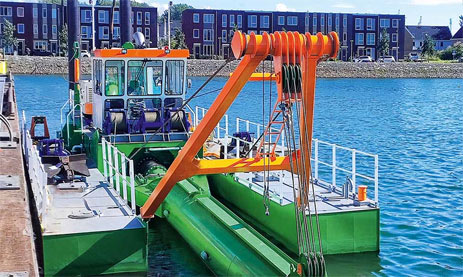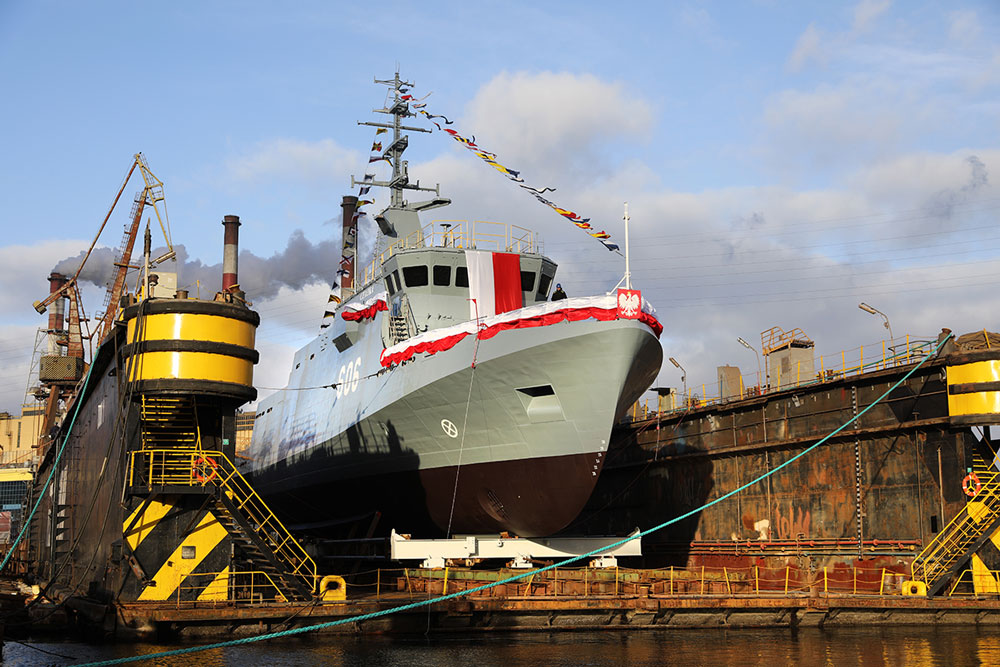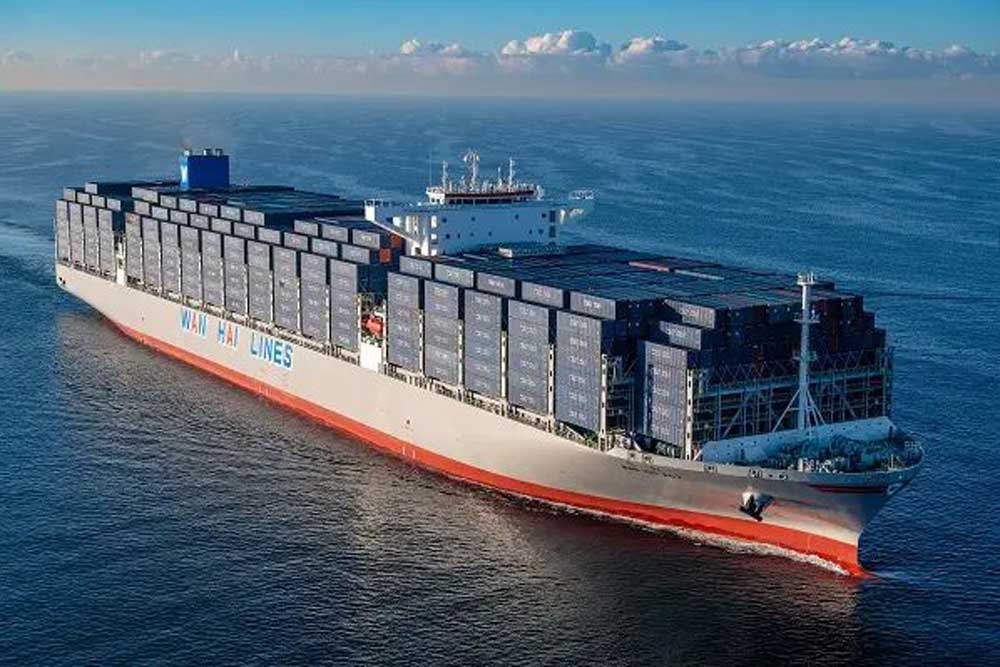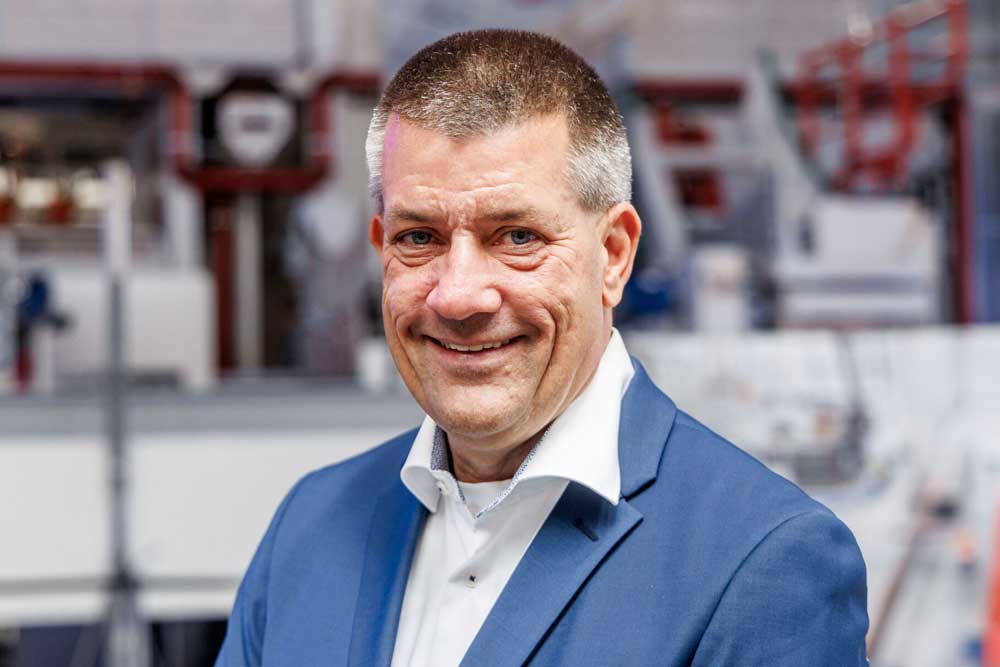The new rock installation vessel is intended for energy projects in the North Sea and South East Asia and can precisely deposit extra-large stones up to 400 m deep. This increases the total capacity of the rock dumping fleet to over 100,000 tons.
With the “George W. Goethals”, shipping company Jan De Nul, which specializes in dredging and offshore projects, is expecting a special addition to its versatile fleet of specialist vessels: The SRI unit (Subsea Rock Installation) will be one of the largest units of its kind in the Belgian shipping company’s fleet with a loading capacity of 37,000 tons, according to the announcement. According to market observers, the newbuilding will be built by China Merchants Heavy Industry (Jiangsu).
The “George W. Goethals” will primarily be used in energy projects in the North Sea and South East Asia. It is equipped with a flexible “vertical drop pipe” system and an inclined drop pipe system and can precisely deposit very large stones at depths of up to 400 meters. This allows cables and pipes to be effectively protected against external influences.
In-house design
The unit is the third rock dumping vessel with a capacity of over 30,000 tons in Jan De Nul’s fleet. The design of the newbuild was developed entirely in-house and is based on decades of experience. “Decades of practical experience have given us extensive expertise in the installation of rock under water. We have incorporated this knowledge into the entire ship design,” says Hutse. The new unit increases the total capacity of the company’s rockfill fleet to more than 100,000 tons.
Underwater cables are the invisible lifeline of modern economies. Thousands of kilometers of cables run across the seabed – they transport electricity between countries, connect offshore wind farms with the mainland and transmit the majority of global data traffic. Their strategic importance makes them not only vulnerable to damage, but also potential targets for sabotage.
With this in mind, Jan De Nul is stepping up its commitment to protecting this infrastructure. “A state-of-the-art vessel like this represents a significant investment and a well-considered decision. As World Builders, we are fully committed to creating a reliable energy system worldwide,” emphasizes Philippe Hutse, Director Offshore Energy at Jan De Nul. “Protecting the infrastructure that supports offshore energy production and transmission is critical to achieving this goal. With this new vessel, we are shifting up a gear to meet this challenge head on.”
Focus on sustainability
In addition to size and technical performance, Jan De Nul focuses on environmental standards. The “George W. Goethals” is being built as an ultra-low emission vessel (ULEv). A filter system removes up to 99% of particles from the exhaust gases and NOx emissions are below the strict “EURO VI” limits. The machines can run on biofuel and green methanol. A hybrid energy system with batteries for peak load management and optimized consumption control will also be installed.
Four electric excavators on board enable the loading of large stones, which means that there is no need for additional conveyor systems or cranes on land. In this way, the company aims to improve both the efficiency and sustainability of its construction projects.
Offshore fleet expansion
In parallel with the construction of the new “George W. Goethals”, Jan De Nul is also expanding its cable laying fleet. The two XL newbuildings “Fleeming Jenkin” and “William Thomson” are units with a cable capacity of 28,000 tons each – more than any other ship on the market. They are designed for long-distance connections with few underwater links and are predestined for interconnectors that link international energy grids. These cables are intended to transport electricity from regions with overproduction to consumption centers more quickly and thus increase the reliability of renewable energies.
Historic namesake
The new ship is named after George Washington Goethals (1858-1921), an American officer and engineer of Belgian origin who oversaw the construction of the Panama Canal. Jan De Nul was also involved in the expansion of the canal between 2009 and 2016 and was involved in the construction of the third set of locks.
With the investment in the “George W. Goethals” and the parallel new construction programs for cable carriers, Jan De Nul is underlining its ambition to play a leading role in the offshore energy sector. “This investment will strengthen our leading position in the industry,” says Hutse.
The past financial year 2024 was one of the most successful in the company’s history for Jan De Nul. Record sales, significantly increased earnings, a strong project pipeline, high investments in fleet and equipment and a solid financing base paint a robust overall picture. With almost 9,000 employees and more than 300 projects worldwide, the shipping company is in an excellent position – and can look back on a strong financial year despite global uncertainties.
How niches in the offshore and specialty shipping sector can become a business model will also be discussed extensively at this year’s HANSA Forum. Kobbe Peirs, Area Manager at Jan De Nul, will be taking part in a panel discussion on the future course of the offshore industry together with other experts. The Forum will take place on November 27th at the International Maritime Museum Hamburg (IMMH).

Register now and secure your tickets: HANSA-Forum 2025














